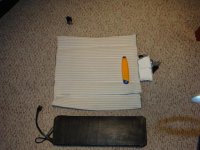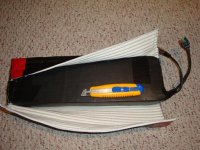REdiculous said:
Duck is a brand, and they have a duct tape line. Other companies also make duct tape. Other companies cannot make Duck tape. :wink:
"The original name of the cloth-backed, waterproof adhesive product was duck tape, developed for the United States Army by the Permacel division of Johnson & Johnson to keep moisture out of ammunition cases. The earliest civilian use I can find is in an advertisement by Gimbels department store in June 1942 (antedating the O.E.D. entry by three decades -- nobody but nobody beats this column), which substitutes our product for the ''ladder tape'' that usually holds together Venetian blinds. For $2.99, Gimbels -- now defunct -- would provide blinds ''in cream with cream tape or in white with duck tape.''
Interestingly, at the bottom of the ad that ran six months after Pearl Harbor is this wartime pitch: ''Get them for the dimout!'' Dimouts were near-blackouts to protect cities in case of air raids; the tape was advertised for defense against World War II bombing raids, just as it is promoted on the eve of gulf war II for protection against gas or germ warfare.
In 1945, a government surplus property ad in The Times offered 44,108 yards of ''cotton duck tape.'' The first citation I can find for the alternative spelling is in 1970, when the Larry Plotnik Company of Chelsea, Mass., went bust and had to unload 14,000 rolls of what it advertised as duct tape. Three years later, The Times reported that to combat the infiltration of cold air, a contractor placed ''duct tape -- a fiber tape used to seal the joints in heating ducts -- over the openings.''"
Also... Duck tape is not recommended for use on ducts...





